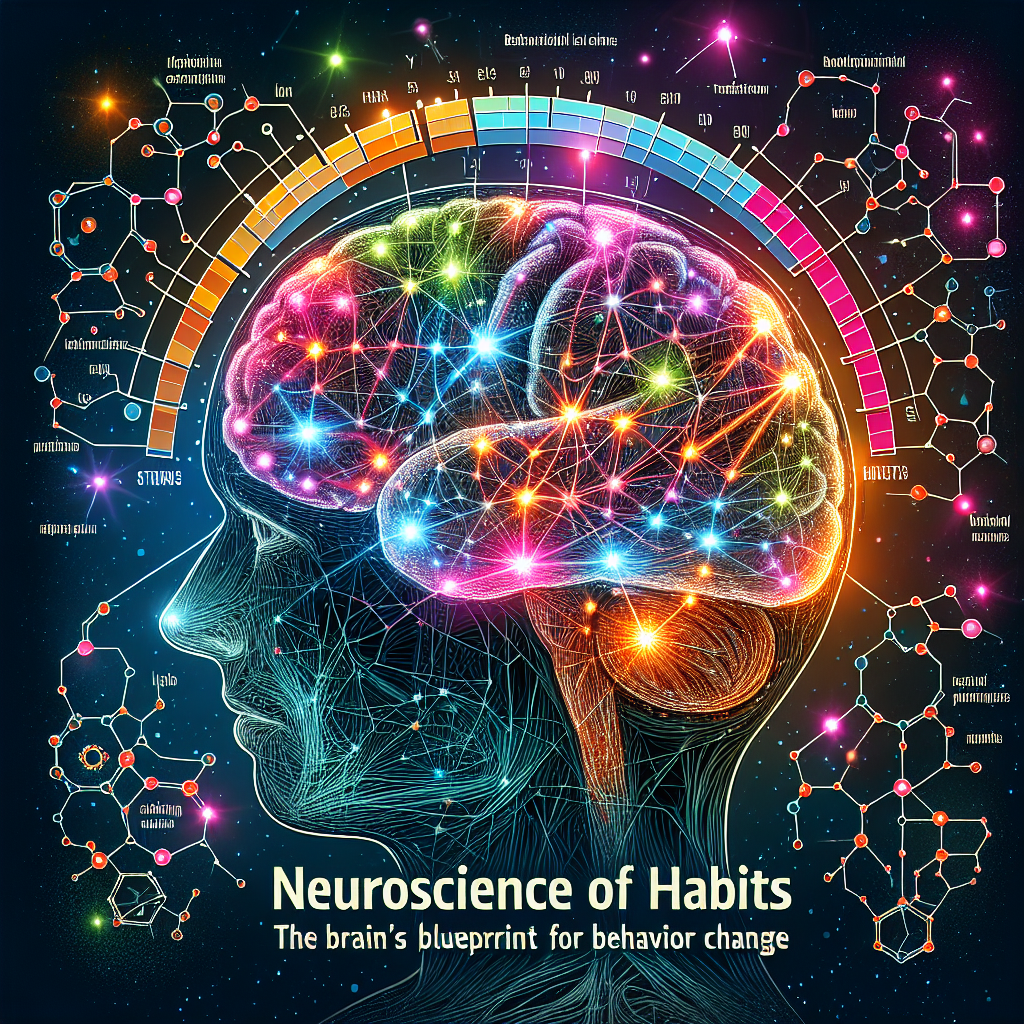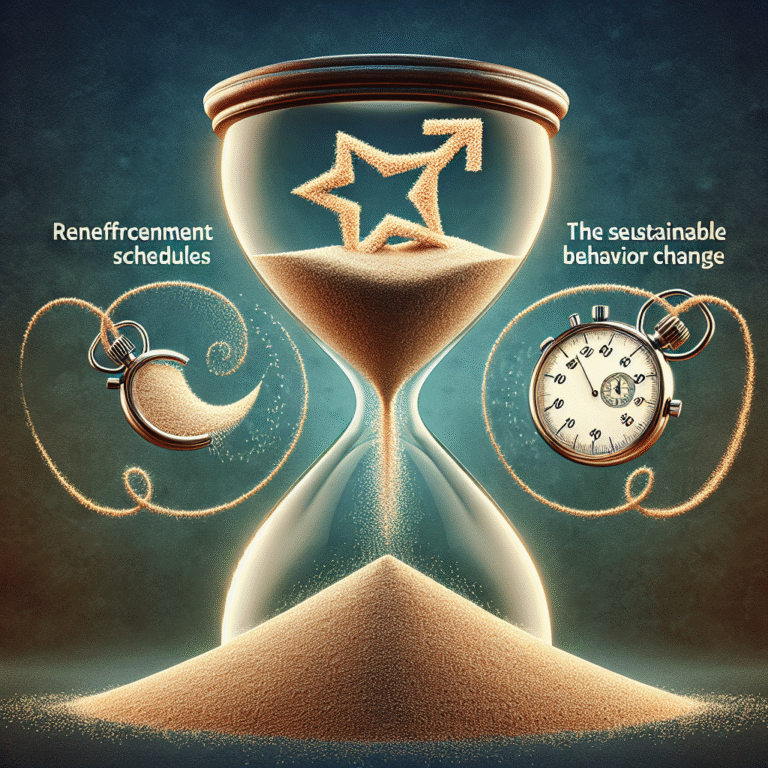
Introduction
Have you ever wondered why breaking a habit feels like trying to swim upstream? Or why some people seem to effortlessly adopt new routines while others struggle? These questions tap into the fascinating realm of the neuroscience of habits: the brain’s blueprint for behavior change. Understanding the intricate mechanics of how habits form, persist, and can be altered is not just for neuroscientists; it’s essential knowledge for anyone looking to transform their life. This article will immerse you in the science behind your daily actions, providing practical insights and strategies to harness the power of your brain.
The Foundation of Habits: How They Form in the Brain
The Habit Loop: Cue, Routine, Reward
At the core of the neuroscience of habits: the brain’s blueprint for behavior change lies the habit loop, a concept popularized by Charles Duhigg in his book, "The Power of Habit." The habit loop consists of three components:
- Cue: This trigger initiates the behavior, whether it’s a time of day, an emotional state, or a specific location.
- Routine: This is the actual behavior or action taken.
- Reward: The benefit received from the behavior, reinforcing the loop.
Understanding this structure helps illuminate why habits can be so difficult to change. For instance, if stress (cue) leads to snacking (routine), the satisfaction from the snack (reward) solidifies the habit. Case study analysis shows that 80% of behaviors in adults are habitual, highlighting the importance of this loop in our daily lives.
Neural Pathways and Rewiring the Brain
Habits involve specific neural pathways in the brain, particularly in the basal ganglia, a region known for its role in habit formation. When we repeat a behavior, the synaptic connections in our brain strengthen, making the behavior easier to perform over time. This is known as synaptic plasticity.
Table 1: Key Brain Regions Involved in Habit Formation
| Brain Region | Function |
|---|---|
| Basal Ganglia | Regulates habits and routines |
| Prefrontal Cortex | Governs decision-making and impulse control |
| Amygdala | Processes emotions tied to habits |
| Cerebellum | Coordinates motor control; important for physical habits |
The Power of Consistency: Building New Habits
The neuroscience of habits: the brain’s blueprint for behavior change indicates that forming new habits requires consistency. The more consistently we perform a new routine, the more embedded it becomes. Research shows that on average, it takes about 66 days for a new habit to become automatic.
Case Study: The 66-Day Challenge
One group of participants in a study conducted by Lally et al. (2010) were asked to adopt new healthy habits, like drinking water instead of soda. The results showed that while some formed their new behaviors in as little as 18 days, others took over 254 days. This variability underscores the necessity of patience and persistence in the habit formation process.
Insights into Changing Old Habits
The Role of Mindfulness and Self-Awareness
To change an existing habit, one must first recognize the habit loop in action. Mindfulness and self-awareness act as powerful tools in this regard. By understanding what cues trigger undesirable habits, individuals can disrupt the loop.
Case Study: The Mindfulness-Based Stress Reduction (MBSR) Program
In a study involving participants from the MBSR program, those who practiced mindfulness reported a 30% reduction in anxiety-related habits. This suggests that mindfulness equips individuals with the mental clarity necessary to resist old habits while promoting healthier choices.
Gradual Change: The 1% Rule
Instead of attempting to overhaul your lifestyle overnight, consider adopting the 1% rule. The idea is that small, incremental changes can lead to substantial improvements over time. In terms of the neuroscience of habits: the brain’s blueprint for behavior change, making a habit 1% better or more consistent each day can create a snowball effect.
Scientific Tips for Altering Habits
Here are some scientifically-backed strategies designed to effectively modify habits:
- Track Your Cues: Maintain a journal to record when and where your habits occur. This tracking can reveal patterns and help you identify what triggers your behaviors.
- Substitute the Routine: Once you identify a cue, replace the routine with a healthier alternative. For instance, swap snacking for drinking water.
- Visualize Success: According to neuroimaging studies, visualizing successful habit change activates similar brain regions involved in the actual behavior.
Table 2: Strategies for Changing Habits
| Strategy | Description |
|---|---|
| Cue Tracking | Journaling habits to find triggers |
| Routine Replacement | Substituting harmful habits with healthy ones |
| Visualization | Mental rehearsal of desired behavior |
| Accountability | Enlisting friends or groups for support |
Building Productive New Habits
The Power of Environment
The neuroscience of habits: the brain’s blueprint for behavior change highlights the significant influence of our environments on our routines. Designing a conducive environment can pave the way for sustainable behavior change.
Case Study: The Stanford Graduate School of Business Experiment
In a study conducted by researchers at Stanford, participants who were placed in environments where healthy foods were more accessible made better dietary choices. This reinforces the concept that changing your surroundings can significantly cue better habits.
Commitment Devices: Locking in Change
A commitment device is a strategy that helps people execute their intentions. By creating accountability, these devices can boost the chance of adhering to new habits.
Examples:
- Setting up automatic bank transfers to a savings account.
- Publicly committing to a fitness goal on social media.
The Neuroscience of Habits: Positive Applications
Utilizing the Knowledge for Personal Growth
With an understanding of the neuroscience of habits: the brain’s blueprint for behavior change, individuals can leverage their knowledge for personal development. Here are several applications:
- Health and Well-being: Utilize habit-forming techniques to promote healthier eating and physical activity.
- Productivity: Establish routines that harness peak performance times for tasks.
- Emotional Resilience: Develop habits like gratitude journaling or mindfulness to improve mental health.
Inspirational Case Study: The Power of Habit in Sports
Consider professional athletes who employ habits to enhance their performance. Training regimens are often accompanied by specific mental routines that help them focus. Studies indicate that these structured habits contribute significantly to success in sports, offering valuable lessons on the role of habit in high performance.
Conclusion
The neuroscience of habits: the brain’s blueprint for behavior change paints a powerful picture of the complexity of our daily actions. By understanding the mechanisms that underpin habits, we can strategically position ourselves for successful change. Whether breaking bad habits or building good ones, patience and persistence are key. Remember, every small step you take inches you closer to your goals.
FAQs
1. How long does it take to change a habit?
While it’s often said that it takes 21 days to form a habit, research shows it can take an average of 66 days, depending on the complexity of the habit.
2. What if I fail to change my habit within that time frame?
Don’t be discouraged. Habit formation is a non-linear journey that may require multiple attempts. Reflect on your process and identify what can be improved.
3. Can I change multiple habits at once?
While it’s possible, focusing on one habit at a time generally yields better results. This allows for more concentrated effort and the formation of a stronger neural pathway.
4. How does stress impact habit formation?
Stress can strengthen bad habits as people often seek comfort in routines. Managing stress through mindfulness can improve your chances of successfully altering habits.
5. Are habits easy to break once established?
Breaking a habit can be challenging due to the reinforced neural paths in the brain. However, with determination and consistent strategies, it’s possible to overwrite these pathways.
In summary, understanding the neuroscience of habits: the brain’s blueprint for behavior change equips you with tools to master your behavior and ultimately transform your life. Embrace the journey of change and let your brain’s plasticity work in your favor!














